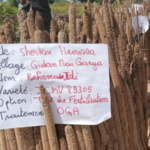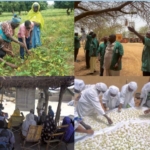


Institut National de la Recherche Agronomique du Niger
Niger
3/2019—3/2023
Pearl millet production in the Sahel is limited by low overall rainfall, intra-seasonal droughts, variable onset of the rainy season, and sandy soils with low fertility and low water-holding capacity. A number of partially indigenous agroecological intensification (AEI) technologies have been developed to improve agricultural practices. AEI technologies include fertilizer or wood-ash microdosing, selective/partial weeding, biological control of insects, farmer-selected pearl millet and improved cowpea and groundnut varieties, seedballs, “OGA” (localized application of fermented human urine as nitrogen fertilizer), agroforestry and livestock integration. Agroforestry options include assisted natural regeneration of shrubs and trees, such as the “Gao” tree (Faidherbia albida) and other multipurpose trees like Piliostigma reticulatum and Guiera senegalensis. With regard to livestock, small goat distribution schemes have been developed to improve women’s income, wealth, and family diets, and strategies have been devised to ensure that the animals are adequately nourished. However, adoption and holistic integration of these technologies are still limited. Building on promising technologies and local knowledge, the “CATI-Gao” project aims at developing options for Crop-Animal-Tree Integration in the Sahelian parkland ecosystem (dominated by the “Gao” trees) in the Maradi region of Niger. The project is led by the Nigerien agricultural research institute INRAN in cooperation with University of Maradi and the farmer federation FUMA Gaskiya, which has experience with and infrastructure for a functional farmer research network (FRN). This project will consider the major staple crop pearl millet in its agronomic and socio-economic context. The project team will foster co-learning about pearl millet-based farming systems in so-called “Farmer Research Farms” (FRF). These will address farm-level integration of pearl millet with the cash crops cowpea and/or groundnut, will explore livestock components that can close the nutrient cycle and improve the household’s diet, and will address agroforestry components that enhance organic matter cycling and serve as fodder or firewood.
This project aims toward a better integration of crops, livestock, and trees to harness the complementary benefits inherent in mixed pearl millet-based farming systems in Niger. This is expected to enhance nutrient cycling within smallholder production systems and thus increase agricultural productivity.
Specific objectives are:

